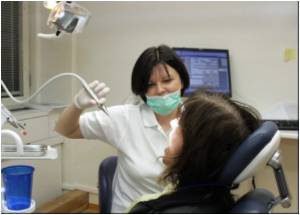Dentists can play a crucial role in identifying systemic diseases, says New York University study. Nearly 20 million Americans annually visit a dentist but not a general healthcare provider.

In the circumstances dentists can help track diseases that might otherwise go undetected in a significant portion of the population, says the study published in the American Journal of Public Health.
“For these and other individuals, dental professionals are in a key position to assess and detect oral signs and symptoms of systemic health disorders that may otherwise go unnoticed, and to refer patients for follow-up care,” said Dr. Shiela Strauss, an associate professor of nursing at the NYU College of Nursing and co-director of the statistics and data management core for NYU’s Colleges of Nursing and Dentistry.
During the course of a routine dental examination, dentists and dental hygienists, as trained healthcare providers, can take a patient’s health history, check blood pressure, and use direct clinical observation and X-rays to detect risk for systemic conditions, such as diabetes, hypertension, and heart disease.
The NYU research team examined the most recent available data, which came from a nationally representative subsample of 31,262 adults and children who participated in the Department of Health & Human Services 2008 annual National Health Interview Survey, a health status study of the U.S. population, which at that time consisted of 304,375,942 individuals. Physicians, nurses, nurse practitioners, and physician assistants were among those categorized as general health care providers for the purposes of the survey.
When extrapolated to the U.S. population, 26 percent of children did not see a general health care provider. Yet over one-third of this group, representing nearly seven million children, did visit a dentist at least once during that year, according to survey results.
Advertisement
Ninety-three percent of the children and 85 percent of the adults had some form of health insurance, suggesting that while many of those who did not interact with a general healthcare provider may have had access to general health care, they opted not to seek it.
Advertisement
Source-Medindia








